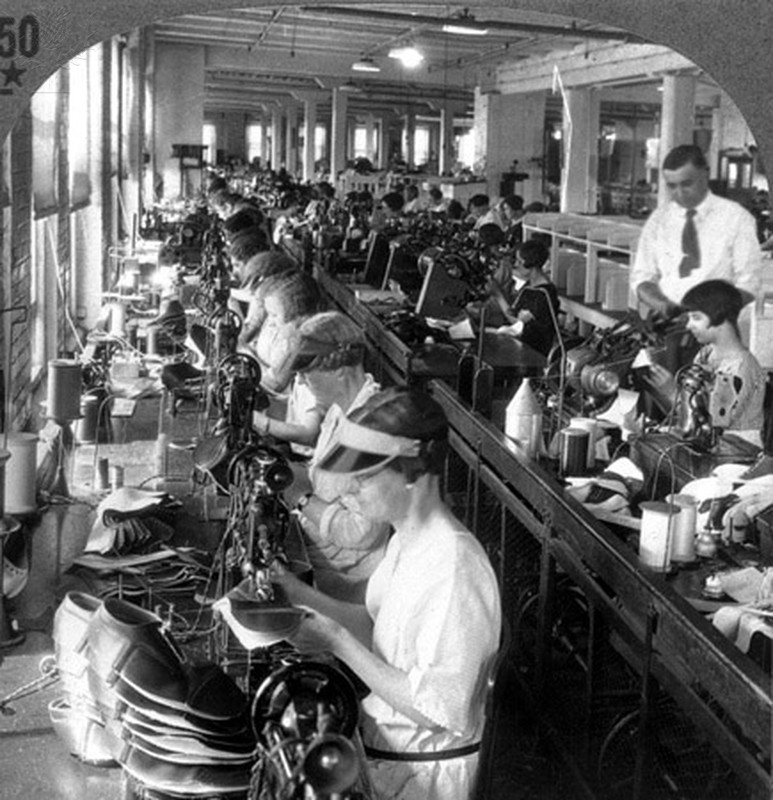The Nineteenth Amendment
Ratified on August 18th, 1920, the "Nineteenth Amendment... officially extended the right to vote to women" (Nineteenth Amendment). It broke important barriers and led the charge toward greater social and economical rights for women in the United States.
"The right of citizens of the United States to vote shall not be denied or abridged by the United States or by any State on account of sex."
~ Amendment XIX,
The Constitution of the United States of America
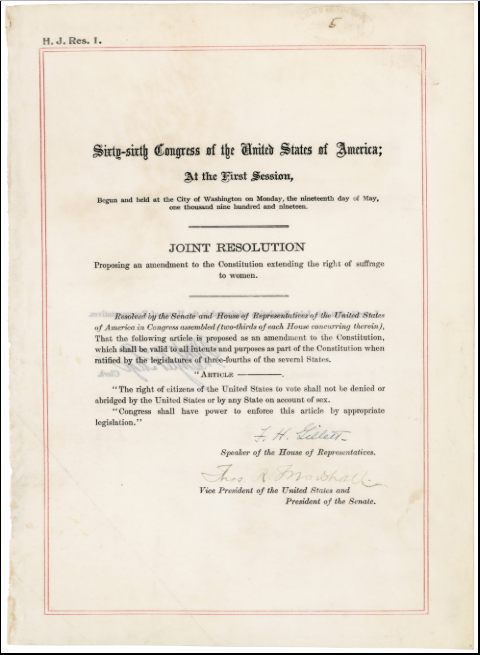
Congress Resolution for Amendment XIX [Image Courtesy The National Archives]
Workforce and Social Standing
"The 1920s saw young women attending college in unprecedented numbers. Furthermore, they were... studying alongside young men in the various state universities and even prestigious private institutions."
~ Leigh Kimmel
As an increasing number of women came into the workforce, "Women kept with the new social climate that abandoned the old notion of sex as male privilege and female chore, [and many] middle-class women insisted that having a career did not mean surrendering their rights to intimacy and affection" (Kimmel).
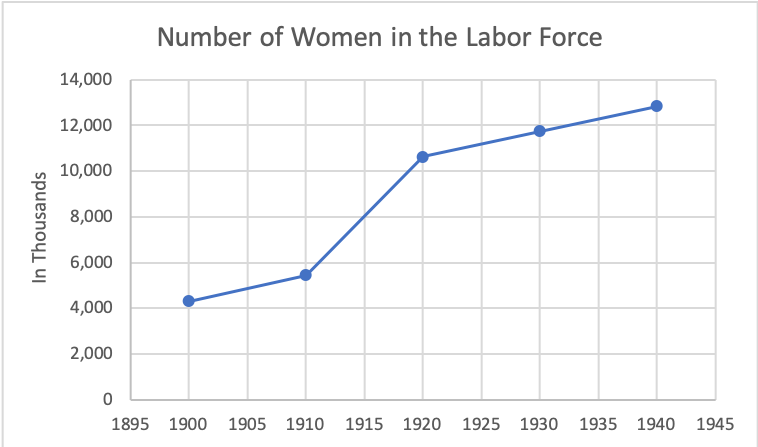
Data courtesy U.S. Department of Labor, Women's Bureau.
These advancements allowed women to face fewer formal barriers than women of the Progressive Era.
Workforce
Despite the many advancements towards gender equality, "there were still plenty of informal barriers that made it difficult to break into any of the major career fields. In particular, male gatekeepers who controlled hiring and admission to professional schools often dismissed women's career aspirations and passed them over in favor of men."(Kimmel)
"Middle-class women who did try to combine marriage and career generally found little social support. Not only were they criticized for having abandoned their wifely and maternal duties by working for pay, but they also found little help at home. Most men of the 1920s were not yet ready to set their hands to work that was still considered not only the sole province of women, but demeaning for a man."
~ Leigh Kimmel,
Family and Daily Life in the Roaring Twenties
Professors
Before Cecilia Payne, the majority of Harvard Professors were male, and not one woman had yet headed a department.
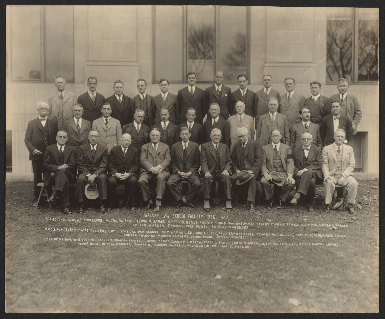
Harvard Faculty 1927[Image courtesy Britannica]
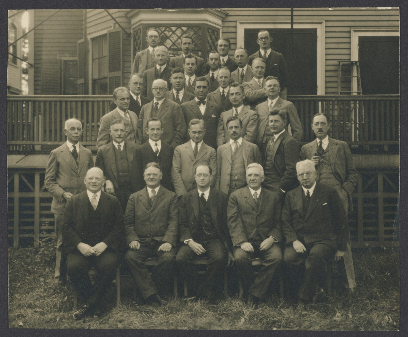
Harvard Faculty 1928-1929 [Image courtesy Britannica]
